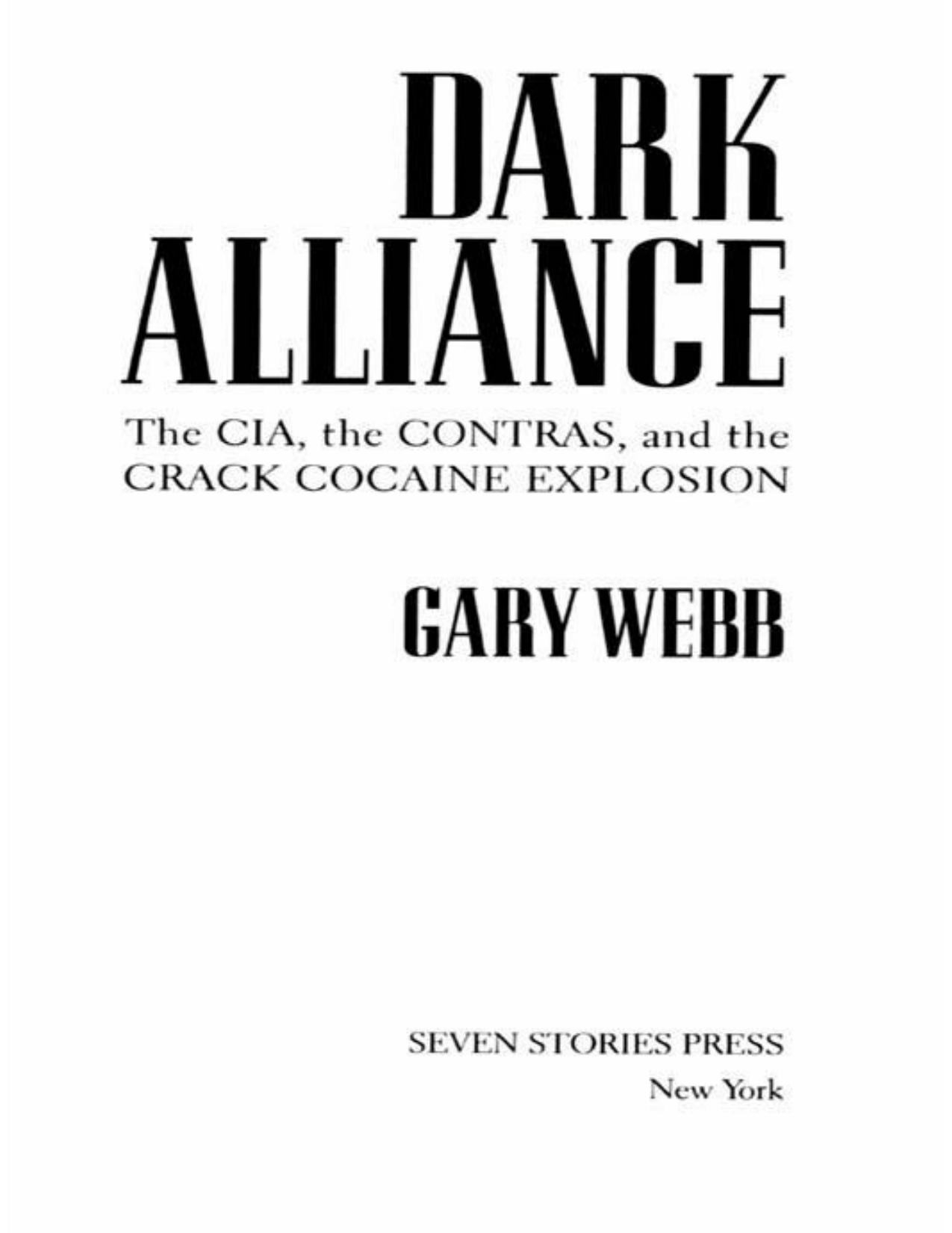Dark Alliance: The CIA, the Contras, and the Crack Cocaine Explosion by Webb Gary

Author:Webb, Gary [Webb, Gary]
Language: eng
Format: epub, pdf
Publisher: Seven Stories Press
Published: 2003-06-30T22:00:00+00:00
15
"This thing is a tidal wave"
That summer, three years after crack exploded in South Central L.A., the national news media finally figured out M what was happening.
Within weeks of each other in May 1986, NBC News, People magazine, and the Associated Press trumpeted the news that a deadly new drug plague was stalking the countryside. According to Tom Brokaw, crack was "flooding America." The AP, in a special weekend feature, said "crack is becoming the nation's drug of choice," spreading "like wildfire." The New York Times drew a picture of "a wave of crack addicts" engulfing the city, spreading "prostitution and other crimes."
Then came the cataclysmic event that is needed to convert any problem into a National Disaster: celebrity deaths. Two well-known black athletes dropped dead from cocaine abuse.
What Richard Pryor did for freebase, college basketball star Len Bias and pro football player Don Rogers did for crack. With their deaths in June 1986, crack went from being a long-ignored problem in a few black neighborhoods to "a threat to our national security," as one U.S. senator described it. Before the year was out, Time and Newsweek would run five cover stories apiece on crack and the drug war; Newsweek would anoint it as the biggest story since Vietnam and Watergate. Time said it was the "Issue of the Year." By November NBC News alone had run more than 400 stories on the topic.
As with most drug stories, the mainstream reporting tended to be half-baked, or just plain wrong. The coverage "followed a typical pattern in which exaggerated claims were supported by carefully selected cases and fueled with evocative words such as 'epidemic,' with its implications of plague, disease, crisis and uncontrollable spread," drug researchers Andrew Golub and Donna Hartman wrote in a study of the media's role in the 1986 crack scare.
The Crack Attack began with a faulty premise, based largely on the news media's myopia. Because there had been few previous reports about crack, many editors assumed that it hadn't existed until then, or they surely would have heard about it. And now crack was seemingly everywhere: in Houston, Detroit, Newark, New York, Atlanta, Kansas City, San Francisco, Los Angeles. Thus, the nation's editors and news directors concluded, crack had spread from coast to coast overnight. While we slept, we had become the victims of a dastardly sneak attack—a kind of chemical Pearl Harbor.
That crack had been ravaging South Central L.A. since 1983 was not mentioned. None of the stories reported how vast the L.A. crack market had become by the summer of 1986, or how enterprising Crips and Bloods were fanning out across the country, introducing it into other black neighborhoods in the West and Midwest, precisely as the two USC sociologists Malcolm Klein and Cheryl Maxson had predicted. The spread of crack by the L.A. gangs would not become generally known for another two years.
Nor did the press notice that a similar migration had been occurring on the East Coast for about eighteen months, as the Jamaican posses and Dominican gangs from Miami began expanding their markets westward.
Download
Dark Alliance: The CIA, the Contras, and the Crack Cocaine Explosion by Webb Gary.pdf
This site does not store any files on its server. We only index and link to content provided by other sites. Please contact the content providers to delete copyright contents if any and email us, we'll remove relevant links or contents immediately.
Asking the Right Questions: A Guide to Critical Thinking by M. Neil Browne & Stuart M. Keeley(5649)
Autoboyography by Christina Lauren(5184)
Eat That Frog! by Brian Tracy(4436)
Dialogue by Robert McKee(4323)
Sticky Fingers by Joe Hagan(4103)
Journeys Out of the Body by Robert Monroe(3572)
Annapurna by Maurice Herzog(3424)
Full Circle by Michael Palin(3389)
Schaum's Quick Guide to Writing Great Short Stories by Margaret Lucke(3321)
Elements of Style 2017 by Richard De A'Morelli(3307)
The Art of Dramatic Writing: Its Basis in the Creative Interpretation of Human Motives by Egri Lajos(3017)
Atlas Obscura by Joshua Foer(2900)
The Diviners by Libba Bray(2887)
Why I Write by George Orwell(2877)
In Patagonia by Bruce Chatwin(2876)
The Fight by Norman Mailer(2848)
The Mental Game of Writing: How to Overcome Obstacles, Stay Creative and Productive, and Free Your Mind for Success by James Scott Bell(2845)
Venice by Jan Morris(2526)
The Elements of Style by William Strunk and E. B. White(2442)
